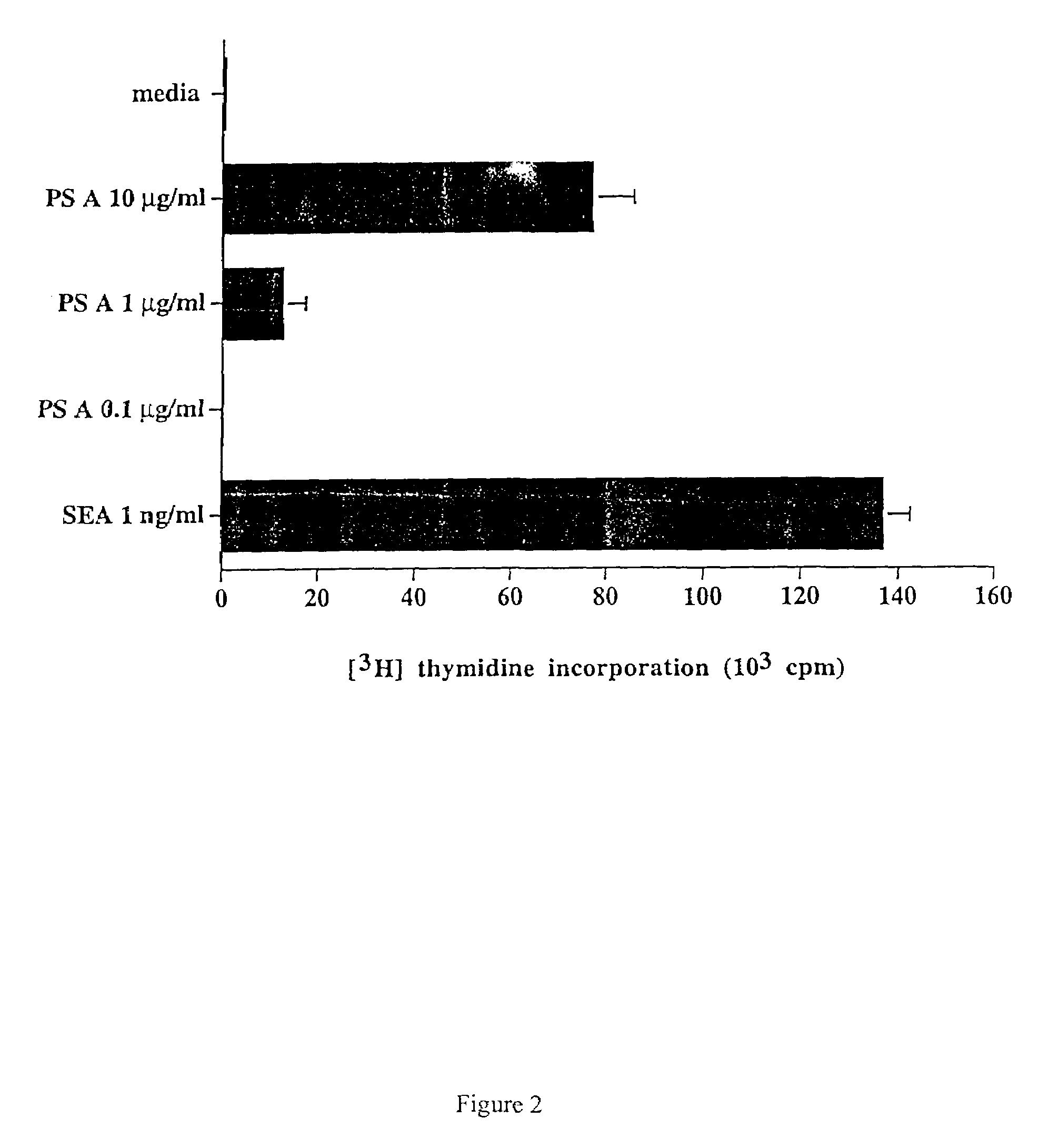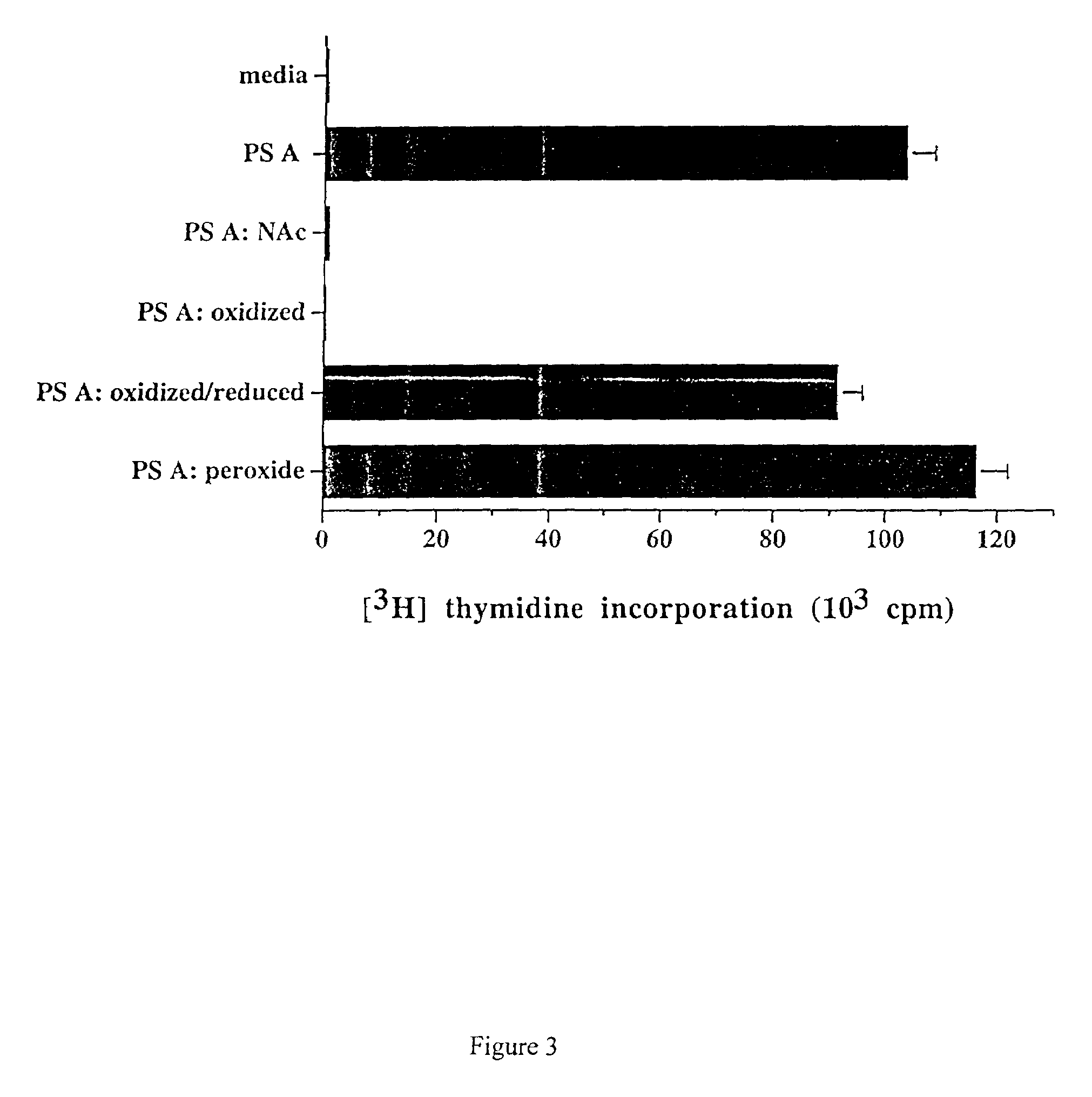Immunomodulating polymers
a polymer and immunomodulator technology, applied in the field of immunomodulators and methods, can solve the problems of recurring sepsis in patients, time-consuming and costly procedures, and prolonged hospitalization, and achieve the effects of reducing postoperative surgical adhesion formation, promoting allograft survival, and suppressing the antibody response of igg
- Summary
- Abstract
- Description
- Claims
- Application Information
AI Technical Summary
Benefits of technology
Problems solved by technology
Method used
Image
Examples
example 1
Sources of Bacteria, Isolation and Modification of Polysaccharides, and Animal Model for Intraabdominal Sepsis
[0156]B. fragilis NCTC 9343 and ATCC 23745 were originally obtained from the National Collection of Type Cultures (London, England) or the American Type Culture Collection (Bethesda, Md.). Microorganisms were stored at −80° C. in peptone-yeast or brain heart infusion broth until used, and grown anaerobically as previously described. Pantosti et al. Infect Immun 59:2075 (1991). The CPC from B. fragilis NCTC 9343 or ATCC 23745 was isolated by hot phenol / water extraction and subsequent purification of PS A performed as previously described. Tzianabos, A et al. J Biol Chem 267:18230 (1992).
[0157]The S. pneumoniae type I capsular polysaccharide (CP) and other pneumococcal polysaccharides were obtained from the ATCC (MD).
[0158]Chemical modifications of polysaccharides to produce molecules with altered charges have been described previously. Taylor, R et al. Biochemistry 11:1383 (1...
example 2
T Cell Activation by PS A Depends on Charge Motif
[0161]The ability of B. fragilis PS A to elicit a protective host response that is dependent on T cells suggested an interaction between PS A and this cell type. Thus experiments were performed to determine whether PS A activates T cells in vitro.
[0162]T cell proliferation assays were performed on cells obtained from human leukopacs (discarded white cells from anonymous platelet donors). Mononuclear cells were separated by ficoll-hypaque sedimentation to eliminate red cells and polymorphonuclear leukocytes. The mononuclear layer, which consisted of T cells, B cells, and mononuclear cells, was depleted of B cells and monocytes by passage over nylon wool column. A portion of these cells was saved prior to placement on nylon wool and were used as autologous feeder cells following irradiation with 6.4 kRads with a cesium source for 4.8 min. Nylon passed cells which were greater than 98% CD3 positive (as determined by FACS analysis) were u...
example 3
Characterization of Zwitterionic Polymer Charge Motif Responsible for T Cell Activation
[0168]This example examines whether another bacterial polysaccharide with a charge motif similar to PS A could activate T cells in vitro. Streptococcus pneumoniae type 1 capsular polysaccharide (CP) is among the few naturally occurring polysaccharides that have oppositely charged groups. Lindberg, B et al. Carhohydr Res 78:111 (1980). The type 1 CP is a trisaccharide repeating unit that has the same sugar residue with a positively charged free amino group (2-acetamido-4-amino-2,4,6-trideoxygalactose residue) that occurs in PS A. In addition, the type I CP has two galacturonic acid residues containing negatively charged carboxyl groups per repeating unit. In previous studies, we have demonstrated that like PS A, the type I CP also protects animals against abscess formation. Tzianabos, A O et al. Infect Immun 62:4881 (1994). In addition, this protective activity is also dependent on the presence of ...
PUM
 Login to View More
Login to View More Abstract
Description
Claims
Application Information
 Login to View More
Login to View More - R&D
- Intellectual Property
- Life Sciences
- Materials
- Tech Scout
- Unparalleled Data Quality
- Higher Quality Content
- 60% Fewer Hallucinations
Browse by: Latest US Patents, China's latest patents, Technical Efficacy Thesaurus, Application Domain, Technology Topic, Popular Technical Reports.
© 2025 PatSnap. All rights reserved.Legal|Privacy policy|Modern Slavery Act Transparency Statement|Sitemap|About US| Contact US: help@patsnap.com



